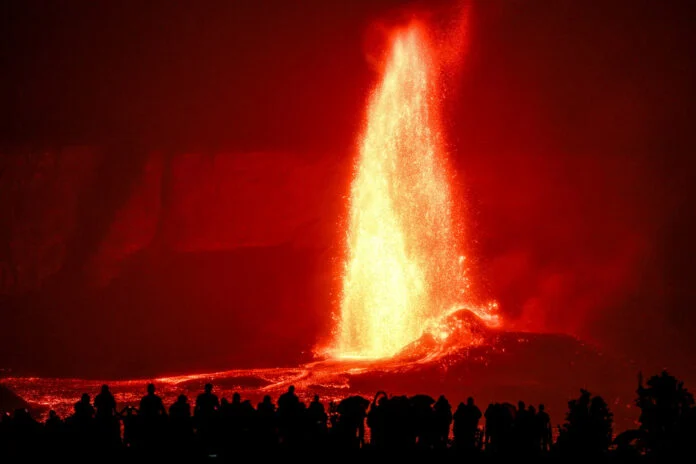BY THE ARCHAEOLOGIST EDITOR GROUP
As the holiday season approaches, images of a jolly old man with a white beard and a red suit are ubiquitous in many parts of the world. Santa Claus, as he's known today, has become a symbol of merriment, generosity, and the holiday spirit. Yet few realize that this beloved figure finds its roots in the life of a real person: Saint Nicholas of Myra. This article delves into the true story of Saint Nicholas, the fourth-century bishop whose life and legends paved the way for our modern Santa Claus.
The Historical Nicholas
Saint Nicholas of Myra, sometimes known as Nicholas of Bari, was an early Christian bishop from Myra, a port city in Asia Minor (present-day Demre, Turkey), who lived during the Roman Empire (15 March 270–6 December 343). He also goes by the name Nicholas the Wonderworker because of the numerous miracles credited to his intercession. In many European cities and nations, Saint Nicholas is revered as the patron saint of sailors, merchants, archers, penitent thieves, prostitutes, kids, brewers, pawnbrokers, singles, and students. As was typical for early Christian saints, his fame grew among the religious, and through Sinterklaas, his fabled practice of presenting gifts in secret gave rise to the modern Santa Claus ("Saint Nick") figure.
In Greece, Saint Nicholas is best known as the patron saint of sailors, fishermen, ships, islands and all cities with harbors.
Saint Nicholas is one of the most revered saints in all of Christianity. On December 6, both East and West observe a day of remembrance. Orthodox, Catholic, Lutheran, and Anglican Christians all honor and remember him. He comforted every man in need and was a passionate critic of those who preyed on the weak and underprivileged. He exerted control over everyone who was to blame for the evil of the people with his exceptional bravery. The absolutely destitute Saint gave to the destitute girls, guarded the crops of the destitute farmers, and helped the sailors. He also participated in the First Ecumenical Council of Nicaea (325), when Christian doctrine was primarily formulated by denouncing the Arius faction and articulating the true and unadulterated faith of the Church. He allegedly smacked Arios during the Council, which led to his imprisonment by Emperor Constantine the Great.
The slap of Agios Nikolaos on Arios.
Tales of Generosity
Several stories surrounding Nicholas’ benevolence have survived over the centuries. One of the most famous legends tells of a poor man with three daughters who had no dowry, putting them at risk of a life of servitude or worse. On three separate occasions, Nicholas secretly tossed a bag of gold into their home, ensuring each daughter had a dowry. Some versions claim he threw the gold through an open window, while others say he dropped it down a chimney, where it landed in stockings left to dry by the fire. Sound familiar?
Another account speaks of Nicholas saving three innocent men from execution. He boldly intervened, grabbing the executioner's sword and ensuring their release based on new evidence.
Yet another story tells of a time when Myra faced a severe famine. A ship filled with grain docked at the port, and Nicholas approached the sailors, asking them to spare a portion of their cargo for the starving citizens and assuring them that God would recompense their generosity. When they finally unloaded the grain in Constantinople, their cargo had not diminished at all.
He was a representative embodiment of the ancient Greek tradition. The humanitarian ideals of Hellenism, in combination with Christian ethics, met in the holy face of Nicholas and became a religious practice. His democratic tactics and his collegial methods in his actions were articulated through the experience of the long-standing Greek tradition, which was saved and improved by Christian teaching and practice.
Sinterklaas arriving in a Dutch town.
Evolution of the Legend
Saint Nicholas was a true exponent of the Greek-Orthodox Christian ideal, who "traveled" the world and was identified with the German god Odin, the Dutch Sinter Klaas, the Scandinavian Nisse, the English "Father Christmas", the "Nice Old Father" of the Chinese, Père Noël of the French and Santa Claus of the Americans, while on his "return back” to his place of origin he was identified with Agios Vasilis (greek: Άγιος Βασίλης, Basil the Elder)!
The "nice old father" of the Chinese.
In Greece, Saint Nicholas is best known as the patron saint of sailors, fishermen, ships, islands, and all cities with harbors, just as Myra was. The feast day of St. Nicholas is on December 6th, the day when the beloved bishop is reported to have died (in the year 342 A.D.). The proximity of this date to Christmas is perhaps one reason why he has become so closely associated with it. Saint Basil of Caesarea, who lived from A.D. 329–379, shares a very similar story to that of St. Nicholas. A contemporary of Nicholas, Saint Basil was the bishop of Caesarea in Cappadocia, also in modern-day Turkey. Much like St. Benedict in the West, St. Basil established wide-ranging guidelines for monastic life. He died on January 1, 379, and Greeks all over the world honor Saint Basil (“Agios Vasilis”) on that day. Gifts are exchanged on that day, rather than on Dec. 6th or 25th, to remember St. Basil’s ingenious method of giving back to the people.
Father Christmas English Style.
The story of Agios Nikolaos traveled around and was rooted throughout Europe. The name Saint Nikolaus was transferred to Europe, where the Christians received the Greek beliefs of Agios Nikolaos. Russian and Bulgarian folk songs say that it helps those who are in danger at sea. To the German people, St. Nicholas was identified with the pre-Christian pagan deity of Odin, who visited children with his eight-footed horse, and because it was hungry, they had to have their boots full of straw near the chimney or fireplace. With the Christianization of the Germans, the myth of Odin leaves and Saint Nicholas comes, who pretends to ride a white horse and is considered the protector of sailors. But the boots, the hanging socks in the fireplace, the decorated fir tree—all their pre-Christian-pagan customs remain. St. Nicholas became the patron saint of Moscow and agriculture in Russia and the patron saint of the Navy in Amsterdam, Netherlands, where, despite a Protestant ban on the recognition of saints, he survived under the name ‘Sinter Klaas’, who is commemorated on December 6th, depicted with a priestly uniform and an episcopal staff to distribute gifts to children. European settlers, mainly Dutch, carried the myth with them to the New World.
Santa Claus with pagan symbols as continuation of the God Odin’s pattern.
The sequel was written in New York in the early 19th century, when Americans began looking for ways to create nostalgic traditions and turned to St. Nicholas, who is commemorated a few days before Christmas. In 1821, the first lithographed book in America, "The Friend of Children", contained a story about Santa Claus and is estimated to be the first to want the Saint to visit children on Christmas Eve. The poem "The night before Christmas" or "A visit from St. Nicholas ", as it became known at the beginning, contributed to this belief.
A norwegian Nisse.
Korvatunturi in Lapland, which was established as the village of Santa Claus in 1927, was first used by the Finns for tourism in the early 1980s. The rest was taken over by the newspapers that reproduced the legend, while Coca-Cola, with its well-known advertisement, put the final touch: the image of Santa Claus with the red uniform and the white beard was finally made by the American company. It was an advertisement for the popular drink in 1931. So, while Coca-Cola uses the image of Santa Claus to increase its consumption during the winter, after seventy years of cooperation," it is found that the Santa Claus image also spread thanks to advertising.
Today's Santa Claus, with his toy workshop and worldwide Christmas Eve deliveries, might seem like a far cry from a fourth-century bishop from Myra. But at the heart of both stories lies a spirit of generosity, love, and the magic of the holiday season. By understanding Saint Nicholas of Myra, we find a richer depth to the festive traditions and are reminded of the core values that make the season truly special.














